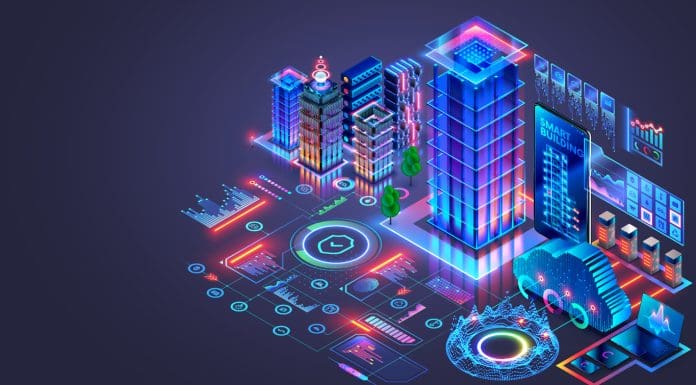
AI is unlocking the next evolution in building infrastructure: truly autonomous buildings, writes Susanne Seitz, CEO of Siemens Buildings Smart Infrastructure
In the rapidly evolving landscape of smart technology, the integration of artificial intelligence (AI) has emerged as a game-changer for industries seeking to enhance energy efficiency, sustainability and user experience in buildings.
This paradigm shift towards AI-based solutions is poised to revolutionise how we approach heating, ventilation and air conditioning (HVAC) systems and energy management, paving the way for autonomous buildings that are not only energy efficient but also responsive to dynamic environmental conditions and the comfort needs of occupants.
HVAC systems account for over 50% of a building’s total energy use
Yet many buildings still rely on fixed schedules or basic reactive rules – systems that struggle to adapt to changing conditions and often result in over conditioning and unnecessary energy use.
Autonomous buildings offer a step change: by continuously learning and adjusting in real time, they deliver levels of precision and efficiency that manual intervention alone cannot match.
This doesn’t replace facility teams; it frees them from repetitive, low-impact tasks, allowing them to focus on higher value work. And because AI-driven systems can be replicated across sites, this level of performance becomes scalable and repeatable across entire portfolios.
Think of AI as adaptive cruise control, but for your building
Enter the era of AI-driven energy management, where predictive analytics and machine learning algorithms empower HVAC systems to anticipate and adapt to changing conditions in real time.
By leveraging operational data, such as weather forecasts or occupancy insights, AI algorithms can optimise heating, cooling and ventilation processes to achieve the perfect balance between comfort and energy efficiency.
This proactive approach, akin to adaptive cruise control for buildings, holds the key to unlocking substantial energy savings while ensuring occupant comfort remains paramount.
Digitalisation and AI automation can increase energy savings by 36.5%
To understand the real world impact of AI in buildings, a great example is Siemens’ Comfort AI application – part of the cloud-based Building X platform.
While digitalisation strategies such as automation, data aggregation and analytics can deliver up to 30% in energy savings, Comfort AI adds an average of 6.5% additional savings on top.
Leveraging proprietary AI and model predictive control (MPC) algorithms, Comfort AI continuously optimises indoor comfort and energy performance, running autonomously across building portfolios without manual intervention.
Achieving sustainability through autonomous building solutions
The shift to autonomous buildings is more than a sustainability milestone – it’s a smarter, faster and more efficient way to operate. By continuously monitoring conditions and adjusting in real time, AI-powered systems reduce energy waste, minimise resource-intensive engineering and remove the need for constant manual intervention.
For operational teams, that means less time spent on routine adjustments and more time to focus on what really matters: delivering the best possible environment for occupants while improving performance across the board.
From cutting emissions to boosting resilience, autonomous buildings enable a level of control, responsiveness and repeatability that conventional systems simply can’t match.
The post How AI is powering a new era of energy-optimised, autonomous buildings appeared first on Planning, Building & Construction Today.

